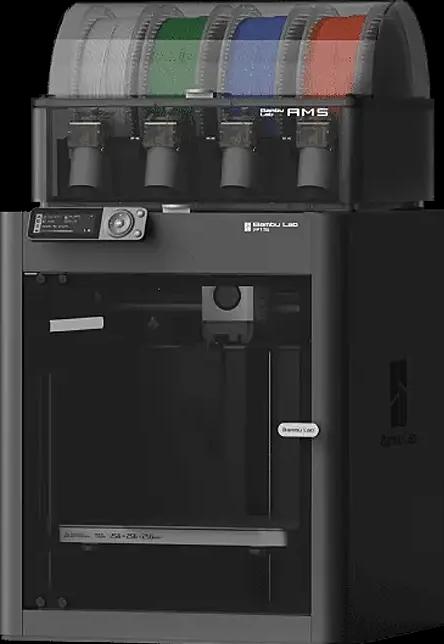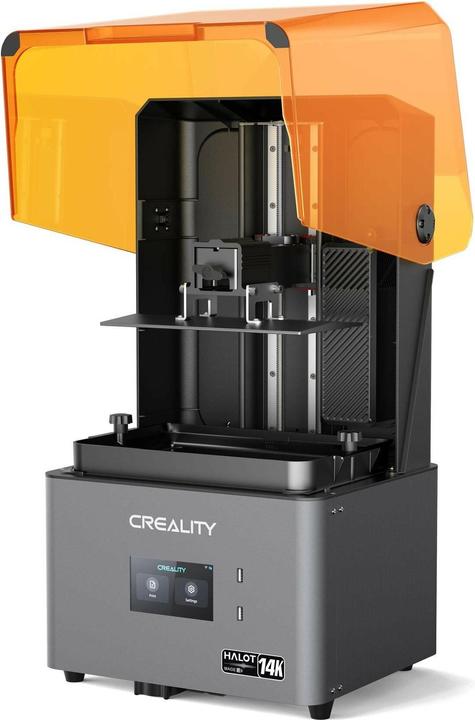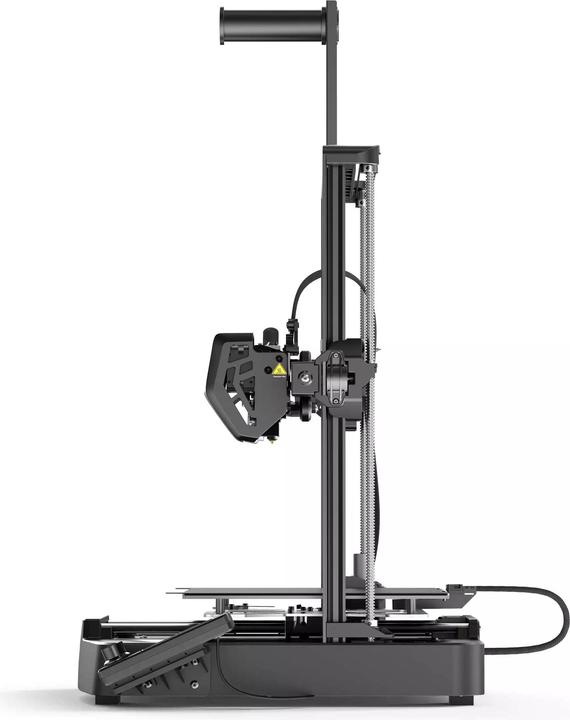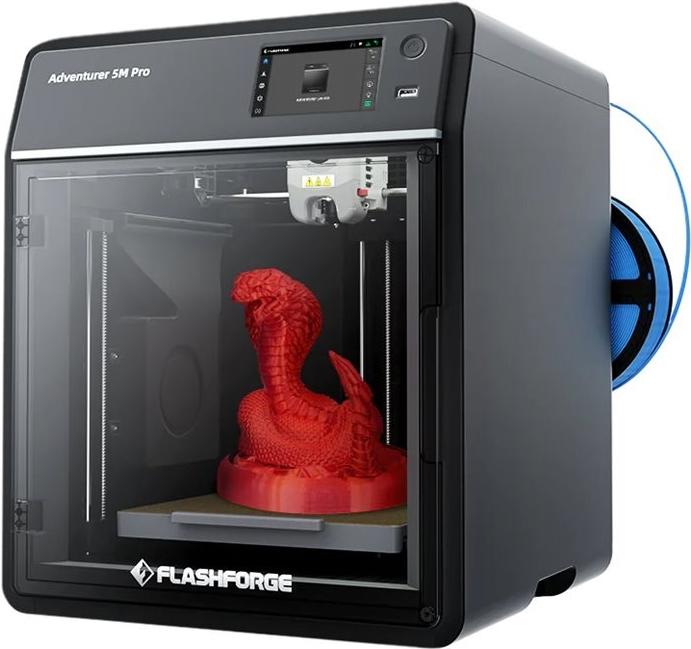
Too Many 3D Printers? Here’s How to Pick the Right One
These five key factors will help you choose the 3D printer that fits your needs.
Last updated 14 hours ago. Automatically generated content.


Select options and limit the number of products
The 3D printing method refers to the technology a printer uses to build objects, which directly affects print quality, speed, and material compatibility. Choosing the right method ensures the printer meets your needs for detail, strength, and ease of use, whether for prototypes, models, or functional parts.
Popular options (you can select more than one)
Fused deposition modeling (FDM)
Typical price
360.– to 1100.–Heats and extrudes plastic filament layer by layer to create models.
Offers affordability and versatility, making it ideal for beginners, hobbyists, and rapid prototyping.
Bestseller
Fused Filament Fabrication (FFF)
Typical price
210.– to 1300.–Works similarly to FDM by melting and depositing thermoplastic filament in layers.
Widely used for its reliability and ease of use, suitable for educational, home, or basic industrial projects.
Bestseller
Stereolithography (SLA)
Typical price
440.– to 710.–Uses a laser to cure liquid resin into solid layers, producing high-detail prints.
Delivers smooth surfaces and fine details, making it ideal for jewelry, dental models, and detailed prototypes.
Bestseller
Digital Light Processing (DLP)
Typical price
180.– to 360.–Cures liquid resin with a digital light projector, producing each layer at once for faster prints.
Produces highly detailed and accurate models quickly, suited for professionals needing precision, such as in dentistry or miniatures.
Bestseller
Print material refers to the type of filament or resin a 3D printer uses to create objects, impacting the strength, flexibility, and appearance of finished prints. Choosing the right material is essential as it determines what you can make, how durable your prints are, and how easy the printing process will be.
Popular options (you can select more than one)
PLA
Typical price
300.– to 1000.–Made from renewable resources like corn starch, PLA is easy to print with and has a low melting point.
Ideal for beginners and everyday projects; produces smooth, detailed prints but is less heat-resistant and durable than other materials.
Bestseller
ABS
Typical price
360.– to 1100.–ABS is a tough plastic known for its higher strength and better heat resistance compared to PLA.
Recommended for functional parts and items that need to withstand wear, but requires a heated bed and emits noticeable fumes during printing.
Bestseller
PETG
Typical price
340.– to 1000.–PETG combines the ease of use of PLA with the durability and flexibility of ABS, offering good chemical resistance.
Suitable for mechanical parts and outdoor use, balancing strength and printability with minimal warping.
Bestseller
TPU
Typical price
340.– to 990.–TPU is a flexible, rubber-like material that can bend and stretch without breaking.
Best for making phone cases, gaskets, or toys, but can be more challenging to print due to its softness.
Bestseller
Resin
Typical price
270.– to 680.–Resin is used in SLA or DLP printers to produce highly detailed and smooth prints with fine features.
Great for miniatures, jewelry, or prototypes, but handling requires care as resin can be messy and needs post-processing.
Bestseller
3D printing resolution refers to the minimum layer height a printer can produce, directly impacting the level of detail and surface smoothness in printed objects. Choosing the right resolution is important for balancing print quality, speed, and the specific requirements of your project, whether for prototypes, models, or functional parts.
Popular options (you can select more than one)
10 microns (0.01mm)
Typical price
270.– to 680.–Enables extremely fine layer heights for highly detailed and smooth prints.
Best for intricate models, jewelry, or miniatures where maximum precision is needed, but print times are much longer.
Bestseller
20 microns (0.02mm)
Typical price
260.– to 3200.–Produces fine detail with slightly faster print times than 10 microns.
Ideal for professional prototypes and artistic models that require clarity and smooth surfaces.
Bestseller
50 microns (0.05mm)
Typical price
640.– to 1900.–Balances good detail and reasonable print speeds, suitable for most high-quality needs.
Well-suited for product prototypes, figurines, and parts where finish quality is important but ultra-high detail is not essential.
Bestseller
100 microns (0.1mm)
Typical price
340.– to 890.–Offers faster printing with visible layer lines, delivering moderate detail.
Recommended for functional parts, quick prototypes, or larger objects where speed matters more than fine detail.
Bestseller
Connectivity refers to how a 3D printer receives print files and communicates with other devices, influencing convenience and workflow flexibility. Choosing the right connection type can impact how easily you can send designs to your printer and manage your projects, whether working alone or in a shared space.
Popular options (you can select more than one)
USB
Typical price
300.– to 1100.–Connects the printer directly to a computer or device via a USB cable.
Offers a stable and simple setup, ideal for individual workstations or direct transfers.
Bestseller
WLAN
Typical price
360.– to 1200.–Enables wireless connection to a local network, allowing remote file transfers and printer management.
Provides flexibility to print from multiple devices anywhere within network range, suitable for collaborative or multi-user environments.
Bestseller
LAN
Typical price
400.– to 2100.–Connects the printer to a network using an Ethernet cable for wired networking.
Ensures a reliable and fast connection, beneficial for offices or workshops with several users and high data transfer needs.
Bestseller
SD card
Typical price
300.– to 940.–Allows files to be loaded onto the printer via an SD memory card.
Enables printing without a constant computer or network connection, making it convenient for standalone or mobile setups.
Bestseller
The brand of a 3D printer influences reliability, print quality, and customer support, making it a key factor in the buying process. Well-known brands like Creality, Bambu Lab, and Anycubic differ in their approach to innovation, ease of use, and value, shaping the printing experience for beginners and advanced users alike.
Popular brands (you can select more than one)
Creality
Widely recognized for affordable, customizable printers and a strong user community.
Great for hobbyists and tinkerers who value upgrade options and community support.
Bestseller
Bambu Lab
Known for advanced technology, high-speed printing, and smart automation features.
Ideal for users seeking premium performance and minimal manual setup.
Bestseller
Anycubic
Popular for offering reliable FDM and resin printers at competitive prices.
Balances ease of use with consistent print results, making it accessible for beginners.
Bestseller
FlashForge
Offers user-friendly, enclosed printers with a focus on safety and reliability.
Suitable for schools, families, and professionals needing dependable plug-and-play devices.
Bestseller
3Doodler
Specializes in 3D printing pens designed for creativity and hands-on learning.
Best for educational settings or creative projects where portability and ease are priorities.
Bestseller







